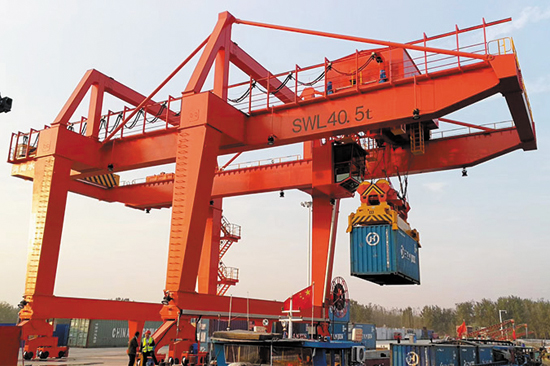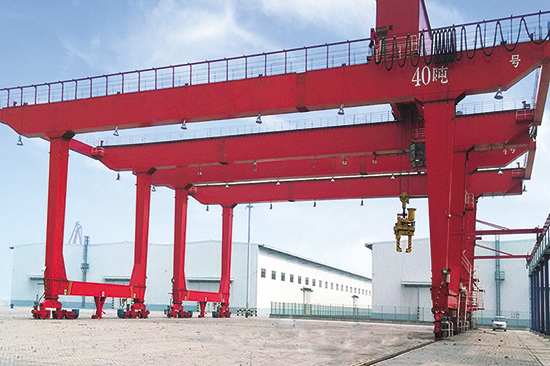In the world of industrial machinery, the choice between quality and price is a recurring dilemma faced by businesses. This decision becomes even more critical when considering investments in equipment like rail-mounted gantry (RMG) cranes. These cranes play a pivotal role in modern logistics, port operations, and container handling. However, the question persists: which factor holds more weight, quality or price? In this article, we delve into the dynamics of this decision, exploring the significance of both aspects in the context of RMG crane investments.
Understanding RMG Cranes: Quality and Functionality
Rail-mounted gantry cranes, commonly referred to as RMG cranes, are towering giants that operate on tracks and are employed in applications requiring precise and efficient movement of heavy loads, typically shipping containers. RMG cranes offer several advantages, including the ability to span multiple container rows, swift lateral movement, and accurate positioning. The functionality and operational efficiency of RMG cranes largely depend on their quality, design, and engineering.

Quality: Ensuring Performance and Reliability
Quality in RMG cranes transcends mere appearances. It encompasses aspects such as materials used in construction, engineering precision, component durability, and compliance with industry standards. Here’s why quality matters:
Reliability: High-quality RMG cranes are built to withstand rigorous operational demands, ensuring minimal downtime and consistent performance. Components that don’t degrade quickly lead to fewer breakdowns, translating to increased productivity.
Longevity: Investing in quality means investing in longevity. A well-built RMG crane has a longer operational lifespan, reducing the need for frequent replacements and associated costs.
Safety: Quality is synonymous with safety. Rigorous design and construction standards ensure that the crane operates without endangering workers, equipment, or cargo.
Performance: Quality components and engineering directly influence performance. Precision movements, efficient load handling, and accurate positioning are all hallmarks of a high-quality RMG crane for containers handling.
Maintenance Costs: Although high-quality RMG cranes may have a higher initial cost, they tend to have lower maintenance and repair expenses over their lifetime due to their robust construction and durability.

Price: The Budgetary Constraint
Price is undoubtedly a pivotal factor in any investment decision. Companies often have tight budgets, and cost considerations can significantly impact the decision-making process. Here’s why price is important:
Financial Viability: Choosing a crane that fits within the budget is a practical necessity. Overspending on equipment can strain resources and potentially hinder other operational or expansion plans.
ROI Calculation: The cost of the crane directly influences the return on investment (ROI) calculation. Balancing price and the potential benefits derived from the crane’s operational efficiency is crucial.
Initial Outlay: A lower upfront cost might enable companies to allocate funds to other critical areas of their operations, such as infrastructure development or technology upgrades.
Competitive Edge: In competitive markets, price considerations can impact the cost structure of services offered. A reasonable investment in an RMG crane can lead to competitive pricing for customers.
Flexibility: Opting for a crane with a lower initial price might provide more financial flexibility for adjustments or contingencies.
Striking the Balance
The quality vs. price debate isn’t an either-or proposition. It’s about finding the right equilibrium that aligns with a company’s goals, operational needs, and financial situation. Striking this balance requires a holistic approach:
Needs Assessment: Begin by identifying your operational requirements. What level of performance, load capacity, and efficiency do you need from the RMG crane? This assessment will guide your understanding of the quality required.
Budget Realities: Evaluate your budget constraints. Determine how much you can comfortably invest in an RMG crane without compromising other critical aspects of your business.
Long-Term Vision: Consider your long-term business goals. Are you looking for a quick solution or a lasting investment? A higher initial investment in quality might offer superior long-term value.
Vendor Reputation: Partner with reputable vendors known for delivering high-quality crane equipment. An established track record can give you confidence in the quality of the RMG crane.
Cost of Ownership: Look beyond the initial price tag. Assess the total cost of ownership over the crane’s lifespan, factoring in maintenance, repairs, and potential downtime.
The quality vs. price debate isn’t one-dimensional; it’s an intricate interplay of factors that influence the success of an investment. RMG cranes, as critical assets in logistics and industrial operations, demand a judicious evaluation of both quality and price. While quality ensures performance, reliability, and safety, price considerations are vital for financial viability and competitive positioning. Striking the right balance requires a nuanced understanding of operational needs, budget realities, and long-term goals. Ultimately, it’s the alignment of these factors that leads to the most effective RMG crane investment—one that optimizes both operational efficiency and financial stability.